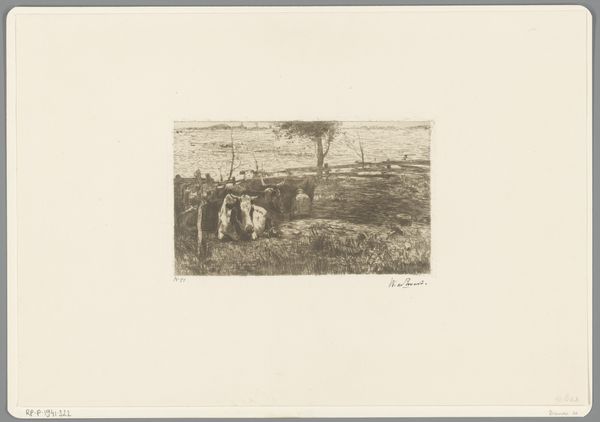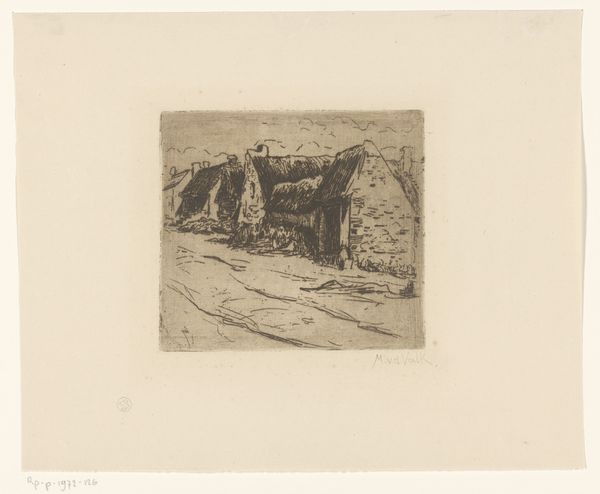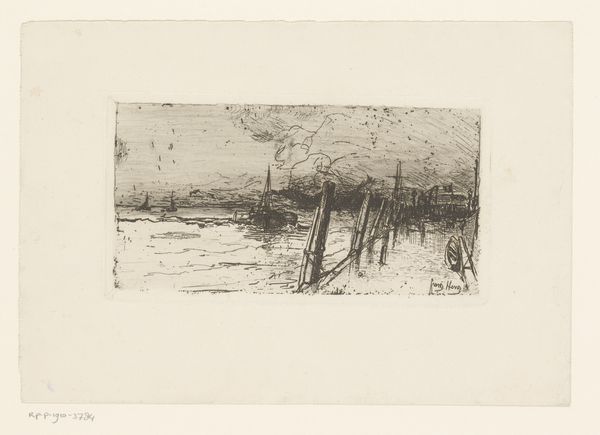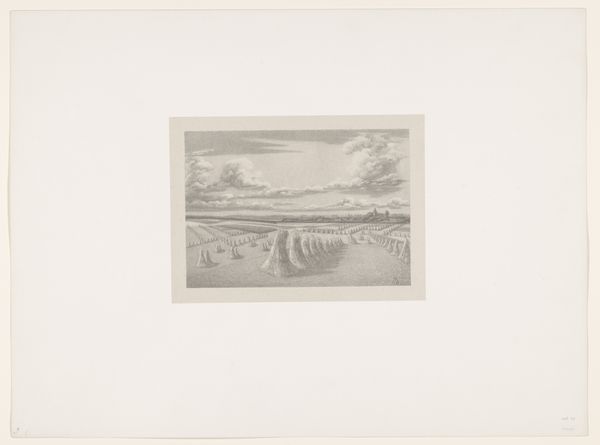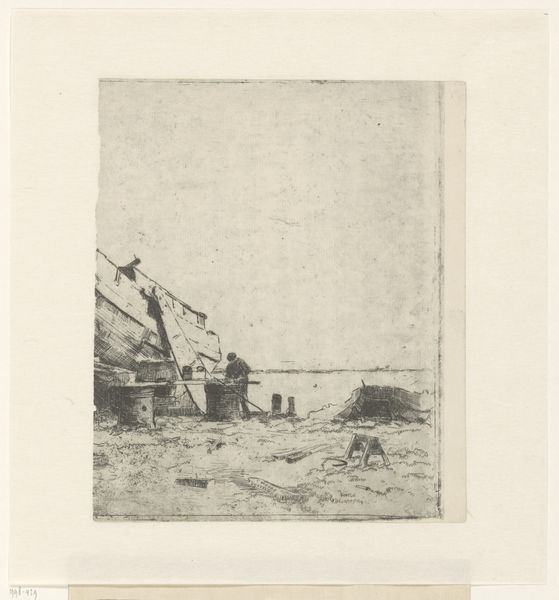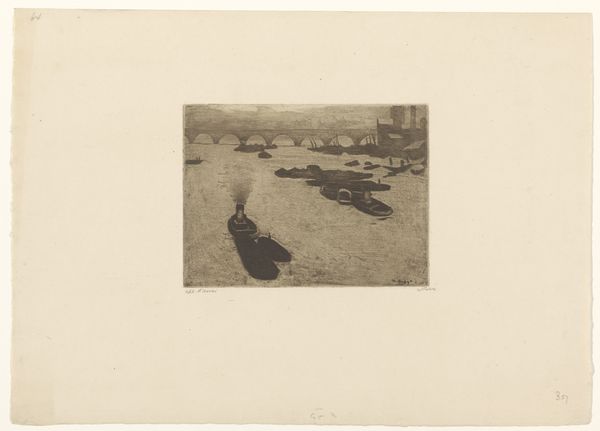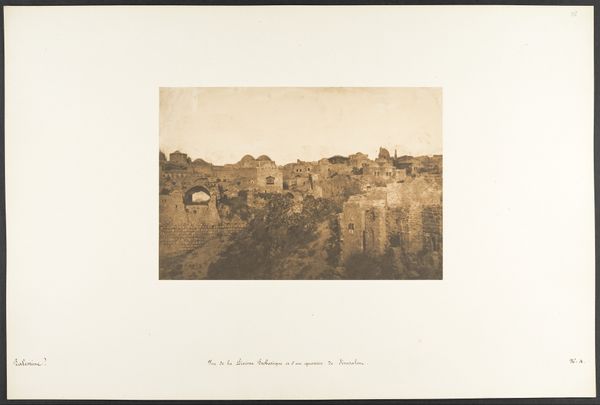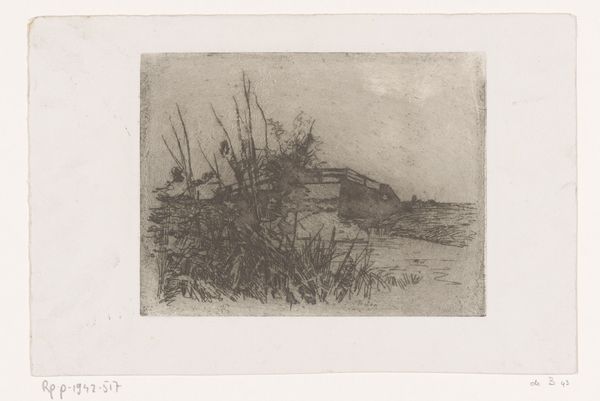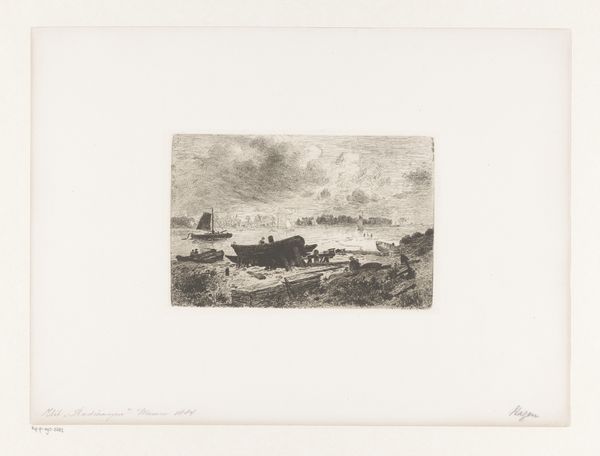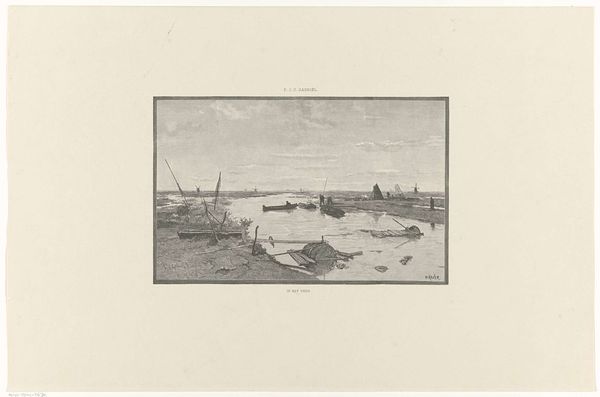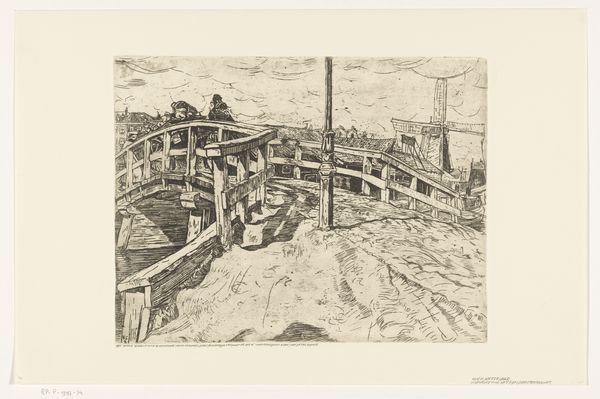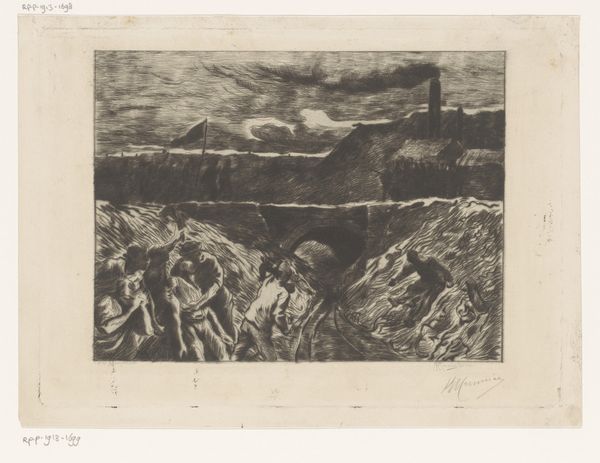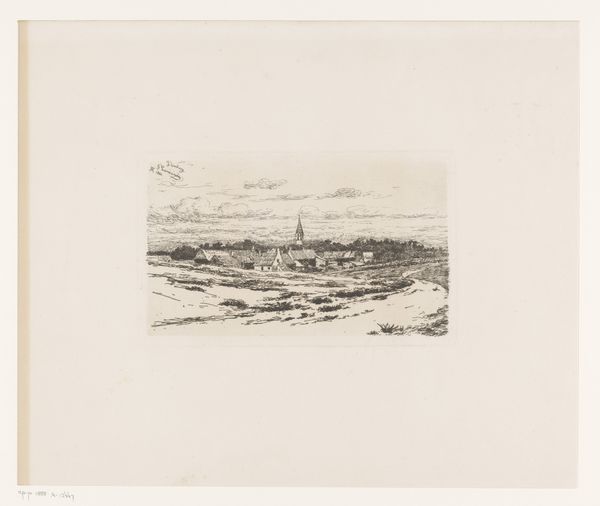
print, etching
# print
#
etching
#
landscape
#
realism
Dimensions: height 141 mm, width 208 mm
Copyright: Rijks Museum: Open Domain
Curator: We are looking at Maurits van der Valk's etching, "Brug bij Bunschoten," created sometime between 1867 and 1935. It resides here at the Rijksmuseum. Editor: Immediately striking. There's an almost haunting quality to the rendering of this bridge—or perhaps part of a bridge. The light and shadow create such stark contrasts, amplifying the structure's bulk. Curator: Indeed, the contrast is central to understanding the work. The bridge section dominates the foreground. Notice the texture achieved through etching, giving both a tactile and visual roughness. Semiotically, the linear precision speaks to order. Editor: For me, the image brings to mind transition. Bridges always do, of course, but there’s a strong visual echo here—perhaps it references the cultural shift happening in the Netherlands as infrastructure rapidly changed. The unfinished state almost embodies that flux. Curator: Interesting. From a formalist viewpoint, consider the balance between the bridge's strong lines and the fluidity suggested by the water. The repetition of linear patterns – the bridge planks, rocks, distant pier – generate a rhythmic tension. Editor: It's true that the scene uses linear construction effectively. Water has symbolic power here: water often means time and a flow or shift toward progress, both physical and metaphysical, for those moving across the bridge. The structure seems weathered, and a sort of humble monument to simple living and the world changing quickly all the same. Curator: And consider the medium—etching, which itself is about carefully structured deterioration. This intentional marking of the material draws parallels between decay of both subject and object. Editor: Van der Valk captured not only a place but a cultural feeling. Thanks to your structural reading, I've now had my perspective expanded. It makes the visual symbols resonate more deeply. Curator: The converse is true for me. Your iconography opened another avenue to interpreting this very stark piece. Thank you for bringing more cultural significance to a study in structure.
Comments
No comments
Be the first to comment and join the conversation on the ultimate creative platform.
